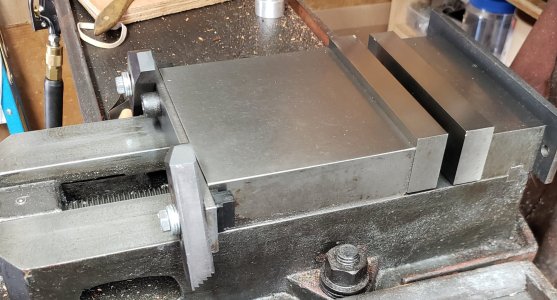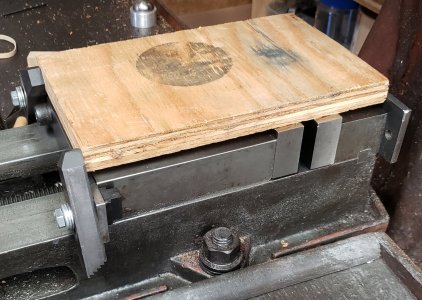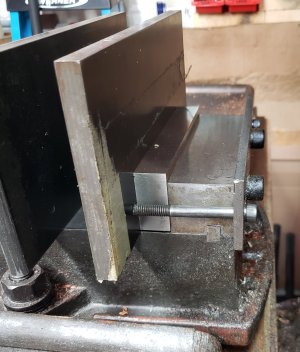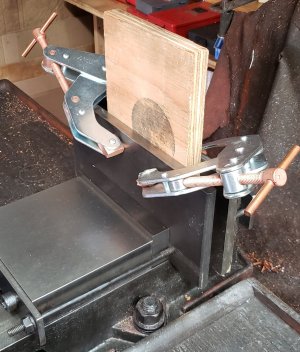trlvn
Ultra Member
So, I have a chuck of 1/4" aluminum plate that I'm reusing for a project. I've made the long edges parallel by claming in the vise and end milling the edges. That's all well and good but what is a simple way to make a short edge square to the long edges? The stock is roughly 5" X 11" and my vise won't open wide enough to hold it. My vise is not one of those new fangled ones where you can move a jaw to the back edge.

Is there some simple technique to clamp the part to the table while registering the already milled edge against the edge of the table so that I can use Y travel to mill square? <Run on sentence? You betcha! Just read it 4-5 times and you'll get the gist.)
To be clear, my goal is "pretty square". This isn't aerospace work so I won't fret about a few tenths of an arc minute! But this seems like reasonably common problem so I suspect that there is likely more than one way to get close enough.
To tell the truth, if it wasn't the end of the day, I would probably have used the mitre gauge on my table saw. I've got an old 9" blade, carbide tipped, that I use pretty much just for cutting aluminum. Lots of shrapnel but it cuts like buttah.
Craig
(The objective is to end up with an "L" shaped part--ideally with rounded corners. I may come back with more questions before I'm done!)
Is there some simple technique to clamp the part to the table while registering the already milled edge against the edge of the table so that I can use Y travel to mill square? <Run on sentence? You betcha! Just read it 4-5 times and you'll get the gist.)
To be clear, my goal is "pretty square". This isn't aerospace work so I won't fret about a few tenths of an arc minute! But this seems like reasonably common problem so I suspect that there is likely more than one way to get close enough.
To tell the truth, if it wasn't the end of the day, I would probably have used the mitre gauge on my table saw. I've got an old 9" blade, carbide tipped, that I use pretty much just for cutting aluminum. Lots of shrapnel but it cuts like buttah.
Craig
(The objective is to end up with an "L" shaped part--ideally with rounded corners. I may come back with more questions before I'm done!)





